Filipino martial arts have existed, been suppressed, and reemerged as a subculture within Philippine society for centuries. For over three hundred years, practice of the arts was outlawed by the Spanish colonizers. However, the popularity of the arts of arnis and eskrima began to resurface on the island of Cebu during the 1920s, whereon a number of martial art practitioners began to openly teach their arts.
In 1920 the late Venancio "Anciong" Bacon, the founder of Balintawak arnis, opened the Labangon Fencing Club-the first commercial arnis club in Cebu. Following Bacon's, lead Johnny Chiuten, Pedring Romo, and the famous Cañete brothers also began openly teaching their respective styles of stickfighting. The 1920s also found the Philippine Olympic Stadium promoting full-contact arnis tournaments. Placido Yambao reigned as champion in a number of matches held in the late 1920s and early 1930s. Yambao was then to go on and write the first book on arnis thirty years later. It was also during this decade that the United States was given its first glimpse of these fascinating arts. From 1920 to 1929, Ramiro A. Estalilla, Sr. taught Rigonan-Estalilla kabaroan at the Minneapolis Athletic Club in Minneapolis, Minnesota.
It wasn't until the 1930s, however, that the various masters in Cebu and the neighboring islands came together in the interest of perpetuating the Filipino martial arts. As a result the famed Doce Pares Association was organized in 1932. The Doce Pares Association is the oldest and longest standing martial arts organization in the Philippines and was a driving force behind the reemergence of Filipino martial arts into Filipino society.
In 1939, Doce Pares was joined by the six Cañete brothers. With differences in political view, Bacon left and founded the Balintawak Self-Defense Club.
Eulogio "Yoling" Cañete became the new Doce Pares president.
In 1937, Benjamin Luna Lema founded the Lightning Arnis Club in Mambusao, Capiz.
Ten years later, in 1947, he was requested by the United States Air Force to relocate to Agana, Guam, to instruct their enlisted men in hand-to-hand combat and arnis. The 1940s also saw the development of the infamous Filipino butterfly knife known as the balisong. In a town in Batangas now known as Barrio Balisong, Perfecto de Leon is credited with developing and manufacturing the first balisong knife. Since that time the balisong has become perhaps the most infamous Filipino weapon.
After being founded in the 1920s, sikaran, the Filipino art of foot fighting received recognition and acceptance in the 1950s from such countries as Japan and Korea. The fifties also found arnis becoming popular in Negros Occidental. From 1956-58 the Bacolod Arnis Club existed under the direction of its founder, Narciso "Sisoy" Gyabros, who taught twelve methods of arnis and in turn had twelve disciples.
Amador "Mading" Chavez was one disciple who was fortunate to have learned all of the twelve styles. After the Bacolod Arnis Club dissolved, Chavez founded the Chavez Arnis Group in 1959. 1957 saw the publication of Placido Yambao's book, Mga Karunungan sa Larung Arnis (Knowledge in the Art of Arnis).
This book caused quite a stir among Filipino martial arts practitioners, as they still regarded the art as an artifact oftheir unconquerable history. However, Yambao's work did much to promote the art of arnis. In 1959, Gerardo Alcuzar founded the Durex Self-Defense Club in the Cebu Institute of Technology, where in addition to eskrima, he offered instruction in combat judo and karate.
During the decade of the 1960s Filipino martial arts again felt a resurgence of interest with schools and styles opening themselves up to the public. In Manila this revival was initiated by an organization called Samahan sa Arnis ng Pilipinas (Association of Arnis in the Philippines). In his speech during the launching of the revival of arnis in Manila, Former Secretary of Philippine Education, Alejandro Roces praised members of the Association, stating:
"A neglected aspect of our cultural history as a people, arnis is as old as the Philippines. It is germane to the Filipino, his culture and temperament. During the prehistoric times, it was indulged in as a form of recreation. Filipinos learned it together with reading, writing, religion, incantation, and Sanskrit. It was not, at that time, merely fencing, as we now regard that term. It had its variations in the form of dance and combative arts known as sayaw or sinulog, which was both artistic and entertaining."
In 1960, Romeo Mamar founded the art of tapado which utilizes a forty-three inch staff held at one end with both hands. The art has only two movements in its repertoire, and they are simultaneously blocks and strikes. Mamar founded this art in Taloc, Bago City after having become disheartened by the limitations of the four methods of arnis, lagas, sinamak, layaw, and uhido, he previously learned. In 1963 the Samahan sa Arnis ng Pilipinas sponsored the First National Arnis Festival. This festival was important as it was the first time that the Filipino martial arts were televised for all to see. Various demonstrations of arnis were given by experts from Far Eastern University and the Tondo School of Arnis, which was founded by Jose Mena.
After studying thirteen styles of arnis, Mena developed a personal style called doblete rapillon or, simply, Mena arnis.
The year 1966 was another eventful for arnis in Cebu City. Florencio Roque founded the Tornado Garote Self-Defense Club to promote Tatay Ensong's bahad style, which Roque studied in the 1930s. Magdaleno Nolasco founded the Black Cat Judo Club.
By 1973 Magdaleno had incorporated escrido-the martial art of Ciriaco "Cacoy" Cañete - and changed the name of his club to the Black Cat Self-Defense Club.
Also in 1966, Angel Cabales,with the assistance of students Max Sarmiento and DentoyRevillar, opened the first "commercial" eskrima academy in the United States in Stockton, California.
Leo Giron followed soon with his Bahala Na Filipino Martial Arts school in Tracy, California.
In 1968, Bakbakan International was founded by a number of martial artists in Manila, as a brotherhood of martial artists in the Philippines. Since it founding Bakbakan has promoted Filipino martial arts around the world through the opening of clubs, sponsoring of seminars, the editing and publishing of books and newsletters, and the production of instructional video tapes. Then in 1969, under the encouragement of then director and secretary-treasurer of the Philippine Amateur Athletic Federation, Colonel Arsenio de Borja, arnis was offered as part of the curriculum for a Bachelors of Arts degree in the physical education program at Manila s National College of Physical Education.
The 1970s marked another important decade for the growth and spread of martial arts in the Philippines.
In 1972, Felimon Caburnay,an original Doce ParesAssociation member, founded the Lapunti Self-Defense Club. With his proficiency in Western fencing, eskrima, combat judo, and wrestling, Caburnay founded a system known as lapunti arnis de abaniko. 1972 also hosted the founding of yaw-yan, an acronym of sayaw kamatayan (dance of death). Yaw-yan is a Filipino kicking style developed by Napolean "Nap" Fernandez.
Unlike the similarities to Korean and Japanese kicking styles held by sikaran, the techniques of yaw-yan are more closely allied to those of muay Thai. During this year in the United States, pekiti tirsia arnis grandmaster Leo T. Gaje founded the Arnis America Organization in New York.
In 1975, the National Arnis Federation of the Philippines (NARAPHIL) was organized by General Fabian Ver. At that time General Ver was the Chief of Staff of the Armed Forces of the Philippines and became NARAPHIL s first president. The Philippine Arnis Confederation was also founded in this year by Crispulo "Ising" Atillo. The goal of the Confederation was to expand on the techniques of their grandmaster, Teodoro "Doring" Saavedra, also an original member of the Doce Pares Association. The Punta Princesa Eskrima Club was also founded in 1975 by Artemio Paez, Felipe Atillo, and Carlos Navarro. The United States had its first full-contact arnis tournament also at this time. The event was held in New York and was organized by Amante "Mat" Mariñas and supported by Florendo "Vee" Visitacion.
Visitacion, interestingly, has founded quite a number of martial arts over the past forty years, Filipino and otherwise. Most notably, though, are his Vee arnis and Vee-arnis-jitsu systems.
As human nature usually has it even the best of intentions go awry. During the course of the revival of Filipino martial arts many of the schools became rivals and their members would fight against one another to see who was superior. However, in the hope of once again promoting solidarity amongst fellow practitioners and schools in Cebu, the Cebu Escrima Association was formed in 1976. The newly formed Association lost no time in perpetuating the arts and that same year, in association with NARAPHIL, it sponsored the First National Arnis Convention and First Asian Martial Arts Festival. Then, in 1977, in Talisay, Cebu, Grandmaster Florencio Lasola founded the Oolibama Arnis Club.
Perhaps the most successful association in the central and southern Philippines in the 1970s was the Tres Personas Arnis de Mano Association. Tres Personas was founded by Timoteo E. Marangawith four specific goals in mind: to promote brotherhood and understanding among the advocates of Filipino martial arts; to encourage and propagate Filipino martial arts among the youth; to defend the weak, the young and the old; and to defend the oppressed people, country, and God. Maranga's martial arts background is varied and includes studies in combat arnis, judo, karate, and Western wrestling. Tres Personas arnis is a mixture of the de marina, de cadena, literada, Batangueña serada, florete, and sumbrada styles.
In the United States in 1977, Dan Inosantopublished The Filipino Martial Arts. Although not the first book on the arts published in English, it was the most widely distributed and well-rounded. Inosanto's early pioneering efforts to expose different Filipino masters and systems is reflected in this work. Then, in 1978, Kyokushin-kai karate instructor Ben Singleton sponsored the Pro-Am Classic tournament in Vista, California. This tournament featured the first full contact open weapons sparring division in the United States. Narrie Babao, a student of Carlito A. Lañada and Dan Inosanto, took first place. On March 24, 1979, the National Arnis Association of the Philippines sponsored the First Open Arnis Tournament in Cebu City, where Tom Bisio reigned as champion. Then, on August 19, NARAPHIL sponsored the First National Invitational Arnis Tournament in Manila. Among the masters who par-ticipated in the "masters sparring division" were Cacoy Cañete from Cebu, Timoteo Maranga and Alfredo Mangcal from Mindanao, Jose Mena, Benjamin Luna Lema and Florencio Pecate from Manila, and Hortencio Navales from Negros Occidental. In Both tournaments Cacoy Cañete reigned as champion. Interestingly, the most infamous master, Antonio Ilustrisimo,
refused to compete under the tournament's rules. In response, Ilustrisimo made the statement: "If anyone wants to take my reputation, they will have to fight me with a sword." There were no challengers.
The 1980s saw a number of tournaments sponsored to further establish arnis as a sport. On March 16, 1985, the Third National Arnis Tournament was held in Cebu City, and the Fourth National in Bacolod City on July 26, 1986. Then, on January 2, 1987 Dionisio "Diony" Cañete, the nephew of Cacoy Cañete, was elected as the new president of NARAPHIL. From May 26-29, 1989, the Philippine Kali Grand Championship was held in Manila. Both events were jointly sponsored by the Kali Association of the Philippines and the Armed Forces of the Philippines. In response to the world wide spread of Filipino martial arts the World Kali Eskrima Arnis Federation (WEKAF) was founded in 1987 in Los Angeles, California, with Dionisio Cañete as its first president. The First United States National Eskrima Kali Arnis Championships was then held in San Jose, California in October of 1988. The First Eastern USA Eskrima Kali Arnis Championships was then held in New Jersey in May of the following year. Then, on August 11-13, 1989, WEKAF sponsored the First World Kali Eskrima Arnis Championships in Cebu, Philippines.
One of the best-known grandmasters of arnis in the Western world is Remy Presas.
Presas first gained popularity in the United States in 1983, with th epublishing of his third book, Modern Arnis: Filipino Art of Stick Fighting. As a result of this book, Presas became known as the "Father of Modern Arnis," and has since been featured on the cover of numerous martial arts magazines, produced six instructional video tapes, and has a larger base of students around the world than any other single Filipino master.
In 1991, Arnis Philippines became the "official" government-sponsored organization to spread the art of arnis. Arnis Philippines then became the thirty-third member of the Philippine Olympic Committee. Through this organization's efforts Arnis was featured as a demonstration sport in the 1991 Southeast Asian Games (SEA Games). Arnis Philippines then formed the International Arnis Federation which brought thirty countries together to work towards the acceptence of asnis as a demonstration sport in the Olympic games. With arnis now the national sport of the Philippines, the Senate Committee on Youth and Sports Development, the Philippine Sports Commission, and the Philippine Olympic Committee jointly sponsored and endorsed the Grand Exhibition of Martial Arts in Manila. The event, held on July 31, 1993, featured demonstrations by practitioners of arnis Lanada, sikaran, kali Ilustrisimo, sagasa, ngo cho kun, pencak silat, hwarangdo, hsing-i, and kyokushin-kai.
The 1990s also saw many other masters coming out of the woodwork to teach or further promote their arts.
Included in this group would be the late founder of lameco eskrima, Edgar Sulite, Balintawak arnis cuentada master Bobby Taboada, arnis and hilot master Sam Tendencia, and Rigonan-Estalilla kabaroan grandmaster Ramiro Estalilla.
The 20th-century has seen a revival of martial arts in the Philippines paralleled by no other country. In the past sixty years the arts went from almost complete isolation and obscurity to world wide exposure and commercialization. With this exposure, and paralleling the ethnic, tribal, and religious separateness in the Philippines, have sprung a plethora of new organizations and associations, new schools and styles, new masters and grandmasters. What the Filipino martial arts needs if they are to remain through the next century is a stronger sense of cohesion. One organization must be crafted to accommodate the various martial ideologies. A single ranking structure must be adopted to assure a high standard for and legitimization of rank among and between systems and styles. This must happen without losing sight of the roots of the arts which commercialization tends to do.
In closing, the words of Leonard B. Meyer are fitting:
"New styles and techniques, schools and movements, programs and philosophies, have succeeded one another with bewildering rapidity. And the old has not, as a rule, been displaced by the new. Earlier movements have persisted side by side with later ones, producing a profusion of alternative styles and schoolsóeach with its attendant aesthetic outlook and theory."
About the Author
Mark Wiley is an accomplished martial artist and leading authority on a variety of Philippine and Chinese martial arts, French savate, tae kwon do and karate. He is the author of three books on Phillippine martial arts, including Filipino Martial Culture, from which this article was in part excerpted. He has served as Martial Arts Editor for Charles E. Tuttle Publishing Co., Book Publishing Editor for Unique Publications, Editor of Martial Arts Legends magazine and Associate Editor for the Journal of Asian Martial Arts. He is author of eight books on martial arts and qi gong and over 100 articles published in a variety of martial arts magazines. He also serves as Associate Editor for FightingArts.com.
Subscribe to:
Post Comments (Atom)
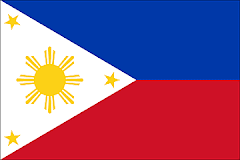


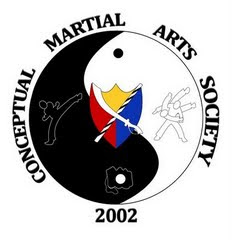


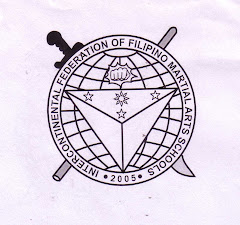

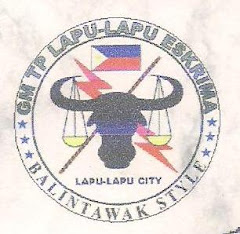






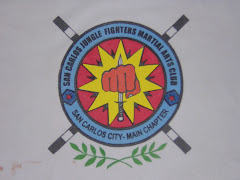



No comments:
Post a Comment